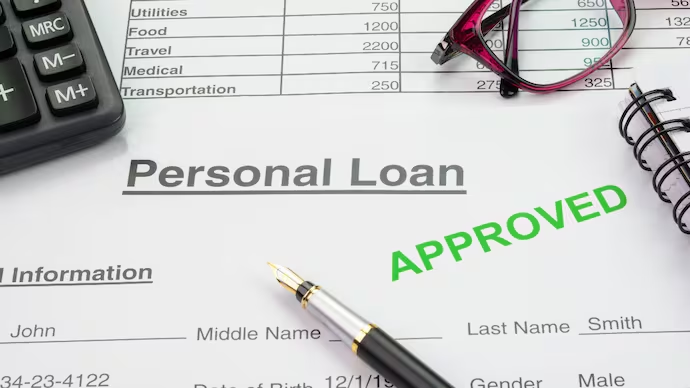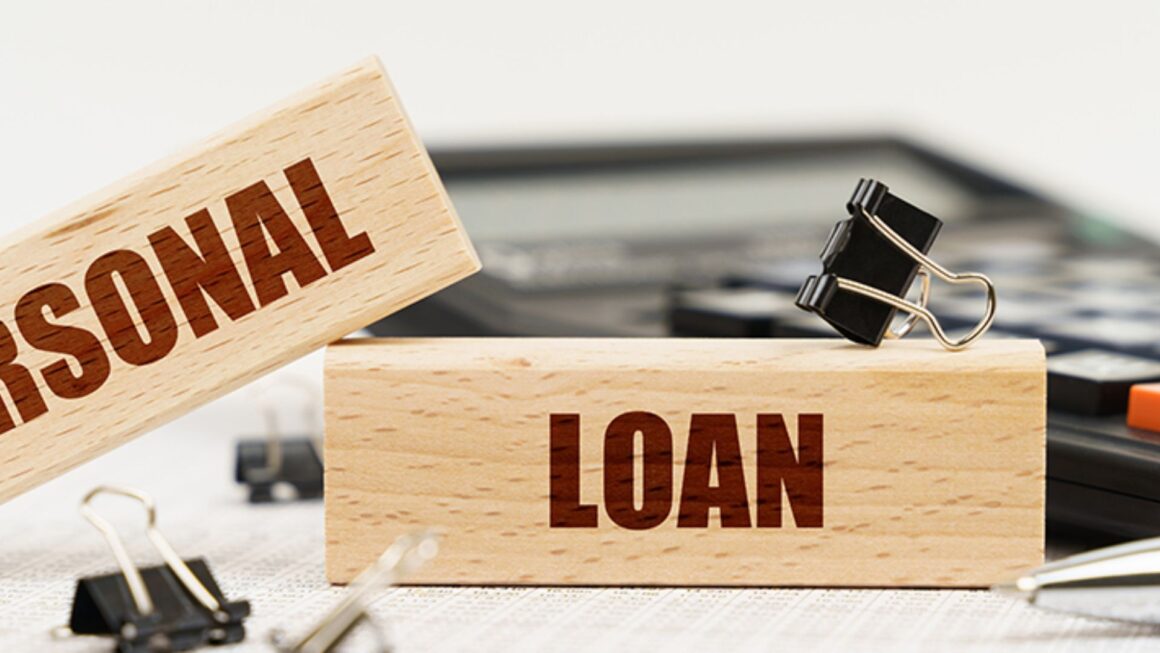Loan approval can sometimes be a smooth process, especially if your documentation is complete and your financial health is strong. Yet, many borrowers experience delays that can stretch from days into weeks or even months. Understanding the causes of these delays can help reduce your stress and prepare you to take the right actions.
This article will explore the loan approval pipeline from start to finish, highlight bottlenecks, and guide you in responding proactively.
Key Takeaways
- Loan approval delays are often caused by incomplete documentation, credit issues, underwriting backlogs, or external factors.
- Understanding the loan process helps identify where delays may occur.
- Prompt communication and thorough preparation can significantly reduce wait times.
- Regularly check your credit and financial documents for accuracy before applying.
- If delays persist, consider alternative lenders or loan types.
- Be patient but proactive; persistent follow-up can keep your application moving.
- Educate yourself on loan terms and options to make informed decisions.
Common Causes of Loan Approval Delays

Loan approval delays usually arise from one or more factors affecting different stages of the loan processing system. Common causes include:
Incomplete or Incorrect Documentation
Loan applications require various documents such as proof of identity, income statements, bank statements, address proof, tax returns, and sometimes collateral documents. If any required document is missing, outdated, or contains errors—like mismatched details or illegible copies—the lender cannot proceed with verification. This causes them to pause and request corrections, adding days or weeks to the timeline.
Verification Process Delays
After receiving your application, lenders perform multiple background checks. These include contacting your employer to verify your income, confirming your residential address, validating your bank statements, and sometimes even reaching out to third-party credit bureaus. Each of these verification steps depends on timely responses from external parties. Delays in receiving confirmations from employers or credit agencies can significantly slow down loan approval.
Credit History Issues
Your credit report is a critical factor in the lender’s risk assessment. If your credit history shows late payments, defaults, or a high debt-to-income ratio, lenders may take extra time to analyze your financial behavior. Additionally, if your credit report has inaccuracies or is incomplete, the lender might pause the process to clarify and resolve these issues.
High Application Volume
Banks and financial institutions often experience surges in loan applications during certain times, such as festival seasons, year-end, or during economic downturns when more people seek financial aid. When overwhelmed with applications, lenders may not process each request as swiftly, leading to backlog and increased waiting times.
Internal Processing and Underwriting Bottlenecks
Loan approval involves multiple departments, including credit officers, underwriters, and risk management teams. Internal bottlenecks due to staffing shortages, inefficient workflows, or outdated technology can slow down processing. Sometimes applications get stuck in queues awaiting managerial approvals, especially for large or complex loans.
Complex Loan Products or Larger Loan Amounts
Loans that involve larger sums of money or special conditions — such as mortgages or business loans — typically require additional scrutiny. The lender may need to perform more detailed assessments, such as property valuations or business audits, which naturally extends the approval timeline.
Issues with Collateral or Guarantor
If your loan requires collateral or a guarantor, delays can arise if there are discrepancies in ownership documents, legal disputes, or if the guarantor’s financial status needs verification. Resolving these issues often requires additional documentation or legal checks, which can lengthen the approval process.
We’ll unpack each of these causes in detail below.
How Loan Approval Processes Work

Understanding the loan approval process itself can help you pinpoint where delays might occur:
Application Submission
This is the first step where you, the borrower, formally apply for the loan. You fill out the application form, either online or at a bank branch, and submit all required documents. These documents typically include identity proof, income statements (like salary slips or tax returns), bank statements, address proof, and any collateral or guarantor-related paperwork if applicable. The completeness and accuracy of this submission set the foundation for the entire process.
Preliminary Review
Once the lender receives your application, they perform a quick initial check to verify basic eligibility. This includes confirming whether you meet the minimum criteria such as age, income level, employment status, and residency. This review acts as a filter to weed out applications that clearly don’t meet the lender’s baseline requirements, saving time for both parties.
Documentation Verification
In this critical phase, the lender verifies all the documents you submitted. This involves:
- Income verification: Contacting your employer or reviewing your tax returns to confirm your actual earnings.
- Employment verification: Ensuring you are currently employed and your job is stable.
- Asset and liability verification: Checking your bank balances, existing debts, and any other financial commitments.
- Credit history check: Obtaining your credit report from bureaus to evaluate your credit score and repayment behavior.
Any discrepancies or missing information can lead to delays as the lender seeks clarification.
Underwriting
Underwriting is the heart of the loan approval process. The underwriting team conducts a thorough risk assessment based on the verified information. They analyze:
- Your creditworthiness and ability to repay the loan.
- Debt-to-income ratio to ensure you can manage new debt alongside existing obligations.
- Loan-to-value ratio (for secured loans) to determine if the collateral sufficiently covers the loan amount.
The underwriter uses this data to make an informed decision to approve, reject, or ask for additional information.
Appraisal and Inspection (If Applicable)
For secured loans, especially mortgages or auto loans, lenders often require a property or asset appraisal. This step involves:
- Appraisal: A professional valuation of the property or asset being pledged as collateral to establish its current market value.
- Inspection: Sometimes a physical inspection is conducted to check the condition and authenticity of the collateral.
This helps the lender mitigate risks by ensuring the collateral is worth the loan amount. Delays can occur if the appraisal process takes longer than expected or if discrepancies are found.
Approval and Offer

After underwriting and appraisal (if applicable), the lender finalizes the loan decision. If approved, the lender prepares a loan offer document that outlines the terms and conditions, including interest rate, repayment schedule, fees, and other relevant details. You will receive this offer and may have the opportunity to negotiate or seek clarifications before accepting.
Closing and Disbursement
Once you accept the loan offer, the final step is closing the loan. This involves:
- Signing all legal loan agreements and disclosures.
- Completing any remaining formalities like providing post-approval documents or collateral registration.
- The lender disburses the funds, either directly to you or to a third party (such as a home seller in the case of a mortgage).
This step officially marks the start of your loan repayment period.
Delays can occur at any of these stages due to various factors.
Documentation and Verification Issues
Incomplete, incorrect, or missing documentation is one of the most common reasons for delays. Lenders require thorough proof of income, identity, employment, assets, and liabilities. Common documentation issues include:
- Missing tax returns or pay stubs
- Expired identification documents
- Mismatched information (e.g., name, address)
- Unverifiable employment status
- Discrepancies in bank statements
When lenders cannot verify your documents promptly, they must request clarifications or additional paperwork, leading to delays.
Impact of Credit Score and Financial Profile
Your creditworthiness plays a critical role in loan approval. Borrowers with high credit scores typically get faster approvals because they are lower risk. Those with borderline or poor credit may require:
- Additional documentation explaining financial history
- Manual underwriting instead of automated approval
- Co-signers or additional collateral
If your credit report has errors or unresolved debts, lenders may take longer to assess your risk.
Underwriting and Risk Assessment Delays
Underwriting is a detailed process where lenders analyze your financial data to gauge risk. This step can take time if:
- Your financial profile is complex
- You are applying for a large loan amount
- The lender’s underwriting team has a backlog
- The lender is conducting manual underwriting
Underwriters may also delay approvals to seek clarifications or additional risk mitigation before approving a loan.
External Factors Affecting Loan Approvals
Some delays arise from factors outside your and the lender’s direct control, such as:
- Regulatory or compliance checks mandated by law
- Third-party verification services (e.g., employment or credit verification agencies)
- Appraisal or property inspection scheduling conflicts
- Economic downturns causing lenders to tighten criteria
- Unexpected events like holidays, strikes, or pandemics affecting staffing
These externalities can cause unpredictable hold-ups in loan processing.
Communication Gaps and Follow-Up
Effective communication between borrower and lender is crucial. Many delays stem from:
- Borrowers not promptly responding to lender requests
- Lenders not providing timely updates or status reports
- Miscommunication about required documents or steps
Being proactive in communicating with your loan officer and promptly addressing requests can minimize delays.
Steps You Should Take If Your Loan Approval Is Delayed
If your loan approval is delayed, here are steps to consider:
- Contact your loan officer or bank representative to understand the specific reason for the delay.
- Review your loan application and documentation to ensure everything is complete and accurate.
- Provide any requested additional documents or clarifications immediately.
- Check your credit report for errors and resolve any issues.
- Follow up regularly but respectfully to keep your loan application top of mind.
- Ask for a timeline estimate and what next steps are needed from you.
- Consider escalating to a supervisor or customer service if communication is poor or delayed.
- Explore loan alternatives if delays are indefinite or terms unfavorable.
Tips to Speed Up Loan Approval
To minimize the chances of delays:
- Gather and organize all documentation before applying.
- Maintain a strong credit score and financial profile.
- Be honest and complete on your application.
- Respond promptly to lender requests.
- Work with reputable lenders known for quick processing.
- Avoid making large financial changes (e.g., new credit cards, job changes) during application.
- Use digital platforms or apps that streamline documentation submission.
When to Consider Alternative Financing Options
If your loan approval is significantly delayed, or you are repeatedly rejected, consider:Other Traditional Lenders or Financial Institutions
Not all banks and financial institutions evaluate loan applications in the same way. Some lenders might have more flexible eligibility requirements, quicker processing times, or specialized loan products tailored to different borrower profiles. For example, a regional bank or smaller lender may be less stringent than a national bank, especially if you have an existing relationship with them. Exploring multiple lenders can increase your chances of timely approval.
Credit Unions
Credit unions are member-owned financial cooperatives that often serve local communities. Unlike commercial banks, credit unions tend to have a more personalized approach and may be more flexible with lending criteria, particularly for local borrowers with stable incomes or community ties. They often offer competitive interest rates, lower fees, and faster loan processing. Additionally, credit unions prioritize member relationships over strict automated credit scoring models, which can benefit borrowers with less-than-perfect credit histories.
Online Lenders and Peer-to-Peer (P2P) Lending Platforms
Online lending platforms and P2P lenders have revolutionized borrowing by using technology to streamline loan applications and approvals. These platforms leverage automated underwriting processes and alternative data sources, enabling faster decision-making—sometimes within hours or days. They tend to be more accessible for borrowers with varying credit scores and offer transparent loan terms. However, interest rates can vary widely depending on your creditworthiness and the platform’s risk appetite.
Secured Loans Backed by Collateral
Loans backed by collateral—such as a house, car, or savings account—often come with quicker approvals because the lender’s risk is reduced. Since the lender can recover the loan amount by selling the collateral if you default, they may be more willing to approve your application promptly, even if your credit score is not perfect. Examples include home equity loans or auto loans. However, it’s crucial to understand that failure to repay could result in loss of the asset.
Personal Loans or Lines of Credit for Smaller Amounts
If you need a smaller loan amount, personal loans or lines of credit can be a viable option. These typically have simpler application processes and shorter approval times. Personal lines of credit are flexible, allowing you to borrow only what you need when you need it, and you pay interest only on the amount used. Many lenders offer unsecured personal loans without collateral requirements, but they may have stricter credit score requirements or higher interest rates.
Carefully weigh interest rates and terms before switching.
Also Read : What Are The Best Personal Loans For Bad Credit In 2025?
Conclusion
Loan approval delays are common but often manageable with the right knowledge and approach. Delays usually stem from documentation issues, verification processes, creditworthiness concerns, or external factors. Staying organized, communicating proactively, and understanding the lender’s requirements can reduce delays and stress.
Remember, your financial health and transparency are key in navigating the loan approval journey successfully. If you face extended delays, do not hesitate to explore other options or seek expert advice.
FAQs
How long does the loan approval process typically take?
It varies by loan type and lender. Personal loans may take a few days, while mortgages can take 30-60 days or longer.
Can I speed up my loan approval?
Yes, by submitting complete documents, maintaining a good credit score, and promptly responding to requests.
What happens if my loan application is denied?
You can request the reason for denial, work on the issues (like credit repair), and reapply later or seek other lenders.
Will applying for multiple loans hurt my credit?
Multiple inquiries in a short time can slightly affect your credit score, but some credit scoring models treat similar inquiries within a 14-45 day window as one.
Is it normal for lenders to ask for so many documents?
Yes, lenders must verify your financial status thoroughly to comply with regulations and manage risk.
What if I don’t understand the loan terms offered?
Ask your loan officer for clarification or consult a financial advisor before accepting the loan.
Can a co-signer speed up loan approval?
A qualified co-signer can improve your creditworthiness and potentially speed up the process.



